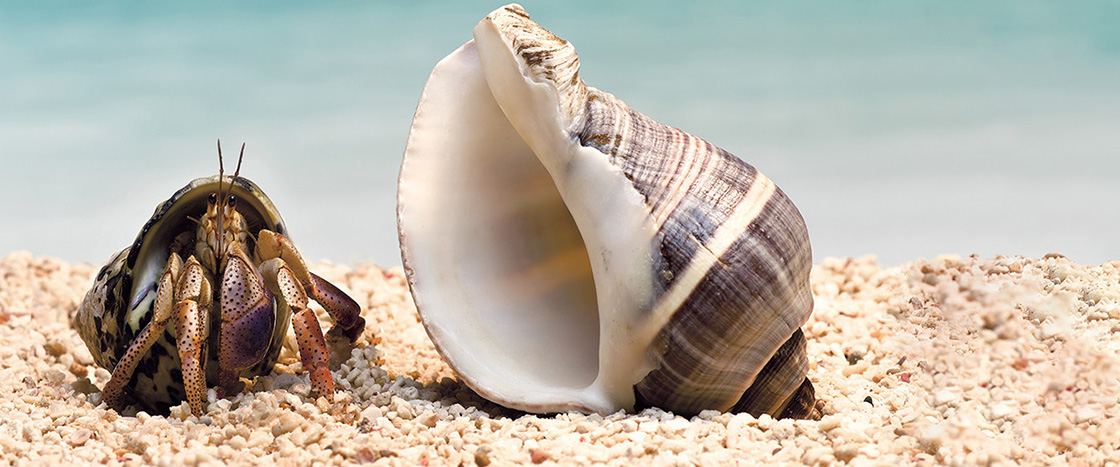When you have a growth spurt, you probably need new clothes. Caribbean hermit crabs have a similar problem! These land crabs don’t grow their own shells. They usually use empty snail shells for their homes. But as a crab grows, it must move into larger shells.
To be without a shell means doom for a hermit crab. The critters depend on their shells for shelter from the hot tropical sun. So how do hermit crabs find new shells? Sometimes they stumble across an empty one that’s just the right size and they move in. Other times, however, they need help.
When you have a growth spurt, you probably need new clothes. Caribbean hermit crabs have a similar problem! These crabs don’t grow their own shells. They use empty snail shells for their homes. But as a crab grows, it must move into larger shells.
Hermit crabs can’t live without their shells. The tropical sun is hot. Hermit crabs depend on their shells for shelter. So how do hermit crabs find new shells? Sometimes they stumble across an empty one. If it’s just the right size, they move in. But sometimes they need help.

